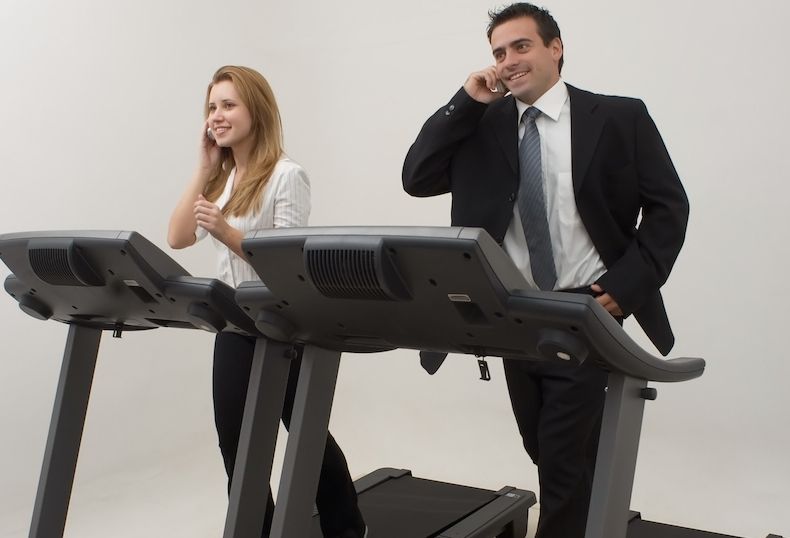Treadmill Desks Don't Make Up for Sitting

Desks that have built-in treadmills may help people walk more at the office, but workers who use the equipment still don't get enough exercise to meet recommendations, a new study finds.
And in fact, treadmill desks pose a number of logical challenges that may be hard for companies to accommodate, ranging from uncooperative supervisors to scheduling problems, the researchers found.
"Treadmill desks aren't an effective replacement for regular exercise, and the benefits of the desks may not justify the cost and other challenges that come with implementing them," the study's lead researcher John Schuna Jr., an assistant professor of exercise and sports science at Oregon State University, said in a statement.
In the study, researchers recruited 41 overweight and obese people with desk jobs at a private health insurance company. The scientists randomly assigned 21 of these people to use shared treadmill desks, and 20 of the people to a control group with regular desks. Those in the treadmill group did not use the treadmill desks at all times, but rather signed up for specific time slots. [Beyond Vegetables and Exercise: 5 Surprising Ways to Be Heart Healthy]
The employees who used the treadmill desks walked about 1,600 more steps than the control group daily, the study found. However, those with treadmill desks did not report any significant weight loss or changes in their body mass index after 12 weeks, according to the study published in the December 2014 issue of the Journal of Occupational and Environmental Medicine.
The workers used the treadmills about half of the time they were supposed to, averaging one 45-minute session daily on the equipment, Schuna said.
Still, the machines have gained popularity among workers who sit at their desks all day.
Sign up for the Live Science daily newsletter now
Get the world’s most fascinating discoveries delivered straight to your inbox.
"There's been a societal shift to more sedentary work," and people are not exercising more during their leisure time to make up for this shift, Schuna said. "We were trying to identify ways we could increase physical activity and combat the decline in occupational physical activity we've seen in the past 50 years."
The workers found that it was often difficult to get 30 minutes of moderate to vigorous activity on a treadmill desk several times a week, the amount recommended by public health authorities such as the Centers for Disease Control and Prevention.
On average, the workers in the study walked at about 1.8 miles an hour (2.9 kilometers an hour), a speed that equates to light exercise. There may be some cardiovascular benefits to such light walking, but people need to engage in more intense exercise to reverse the negative health effects of a sedentary lifestyle, Schuna said.
"One of the challenges with the treadmill desk is that it needs to be [a] lower-intensity activity so employees can still perform their work duties, Schuna said.
The researchers faced several challenges during the study, including recruiting employees. Though the researchers targeted 700 employees at the company, only 10 percent showed an interest. Some people could not participate because they did not receive permission from their supervisors, the researchers said.
The researchers also noted that the workers in the study had to share the treadmill desks, and it was difficult to schedule the time slots to use the equipment. The nature of the employees' work also kept them at their regular desks, even though the company encouraged the use of the treadmills, the researchers said.
More research is needed to find the best way to implement treadmill desks or other exercise interventions into the workplace, Schuna said.
"We need to identify some form of physical activity that can be done simply and at a low cost in an office setting," he said.
Follow Laura Geggel on Twitter @LauraGeggel. Follow Live Science @livescience, Facebook & Google+. Original article on Live Science.

Laura is the archaeology and Life's Little Mysteries editor at Live Science. She also reports on general science, including paleontology. Her work has appeared in The New York Times, Scholastic, Popular Science and Spectrum, a site on autism research. She has won multiple awards from the Society of Professional Journalists and the Washington Newspaper Publishers Association for her reporting at a weekly newspaper near Seattle. Laura holds a bachelor's degree in English literature and psychology from Washington University in St. Louis and a master's degree in science writing from NYU.











